This is a common and classic recipe for Pico de Gallo that I have made for many years at several restaurants that I have worked at across the country. The main difference in the restaurant was that we didn’t cut the vegetables by hand. We had a huge dicing machine that we just slammed everything through, but we were also making like 5 gallons a day.
Taking a handful of fresh produce, sprinkling it with lime juice, and then letting it marinade in the fridge, you’re able to make a surprisingly tasty dish that is great on its own with some tortilla chips or used in lots of dishes from tacos to scrambled eggs.
What is Pico de Gallo?
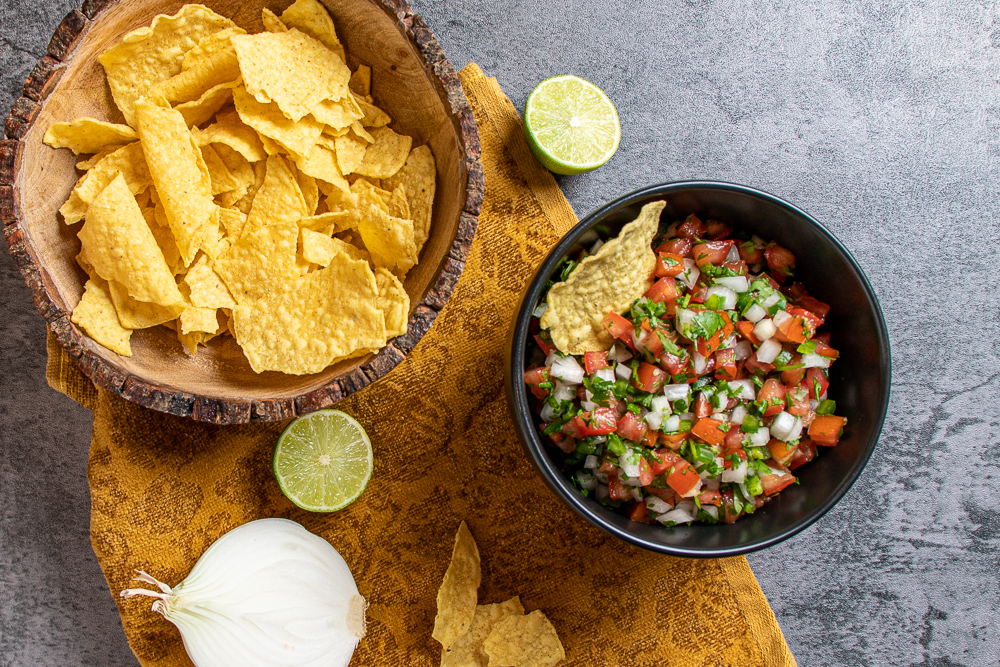
The name translates literally to “Rooster’s Beak”, but I won’t debate on which possible origin story might be the correct one. Also known as “salsa fresca” (fresh sauce) and “salsa cruda” (raw sauce), Pico de Gallo is a type of Mexican salsa known for its fresh ingredients. When I worked in restaurants that served it and someone was unfamiliar with it, I would describe it to them as a drier type of salsa.
What’s the difference in Pico and Salsa then?
Both Pico de Gallo and a lot of traditional red salsas use most of the same ingredients. The biggest difference, however, is that salsa is typically made with more liquid and the ingredients are chopped or pureed into a thin or chunky consistency. Pico de Gallo is literally just dicing and mincing your ingredients and tossing with the lime juice. This also makes Pico an easier ingredient to work with for adding to dishes like tacos and fajitas and quesadillas because it doesn’t turn the dish into a drippy mess like a regular salsa would.
Fresh Ingredients for Pico de Gallo
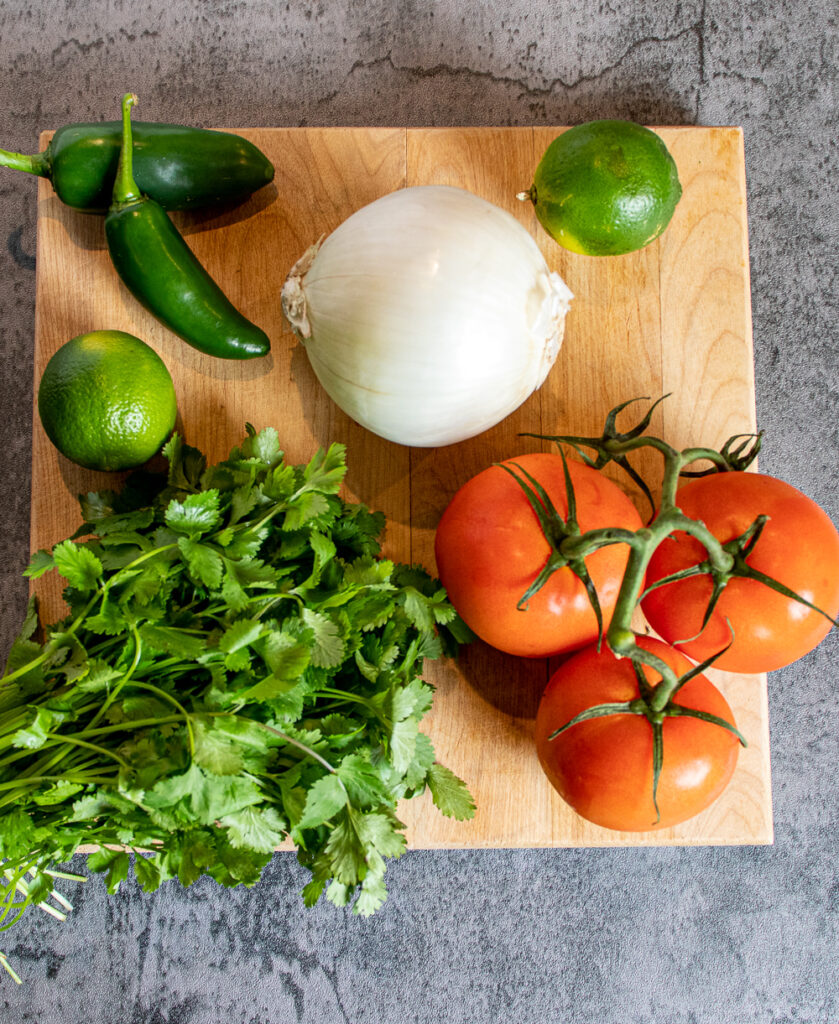
Other than a pinch of salt and (optionally) pepper to taste, classic Pico de Gallo found in most restaurants only contains 5 fresh ingredients:
Red, ripe tomatoes – Whatever season you make this in, always pick the freshest and most ripe tomato available in your area for the best flavor.
White onion – Can use any onion you prefer really, white is just the most traditional.
Serrano or Jalapeno pepper – Can omit if you don’t like the heat, but I would recommend at least one jalapeno for flavor.
Cilantro – (Coriander leaves for the European cooks)
Fresh-squeezed lime juice
A note about the cilantro: a lot of people aren’t a big fan of it, and some people even have the dreaded “soap gene”. If you fall into either of those categories, feel free to scale back the amount used. I think most recipes call for a ½ cup because that’s roughly the amount of chopped cilantro you get from the size of the bunch most stores sell it as. Scale the amount back to as little as 1-2 tablespoons if you’re not a big fan, and if you just cannot eat it at all, try a combination of chopped fresh parsley and basil as a substitute (I wouldn’t recommend just parsley alone however).
Although this list is usually considered a traditional ingredient list, there are numerous regional and family favorites that toss in other ingredients altogether. A few common add-ins or substitutions include bell peppers, cucumbers, tomatillos, jicama, garlic, avocado, mango, orange, carrots, etc.
How to Make Pico de Gallo
Making fresh Pico de Gallo is a simple and straightforward process. Other than the ingredients, all you really need is a sharp knife, a cutting board, and a bowl (preferably a non-reactive kind like a glass mixing bowl but not a big deal).
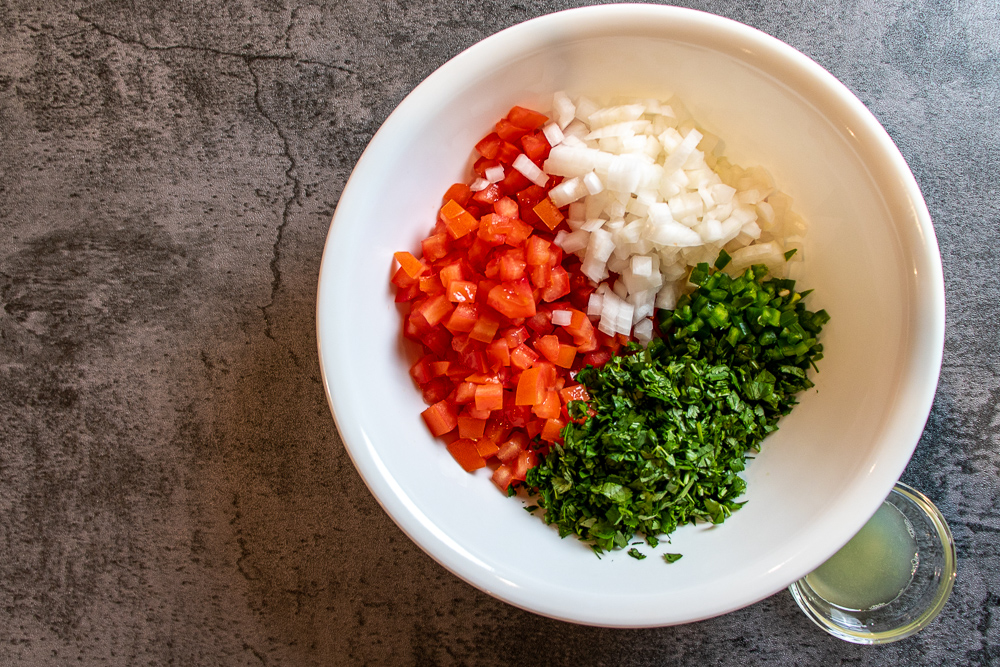
Core and seed your tomatoes and then dice them along with the onion and add to bowl.
Finely chop/mince the cilantro and peppers and add them to the bowl.
Squeeze out roughly 2 tablespoons of lime juice over the vegetables and add a pinch of salt and (optionally) black pepper and then thoroughly mix everything together.
Place in the refrigerator and let marinate for at least 15 minutes and up to overnight, then serve.
How to Serve and Store Pico de Gallo
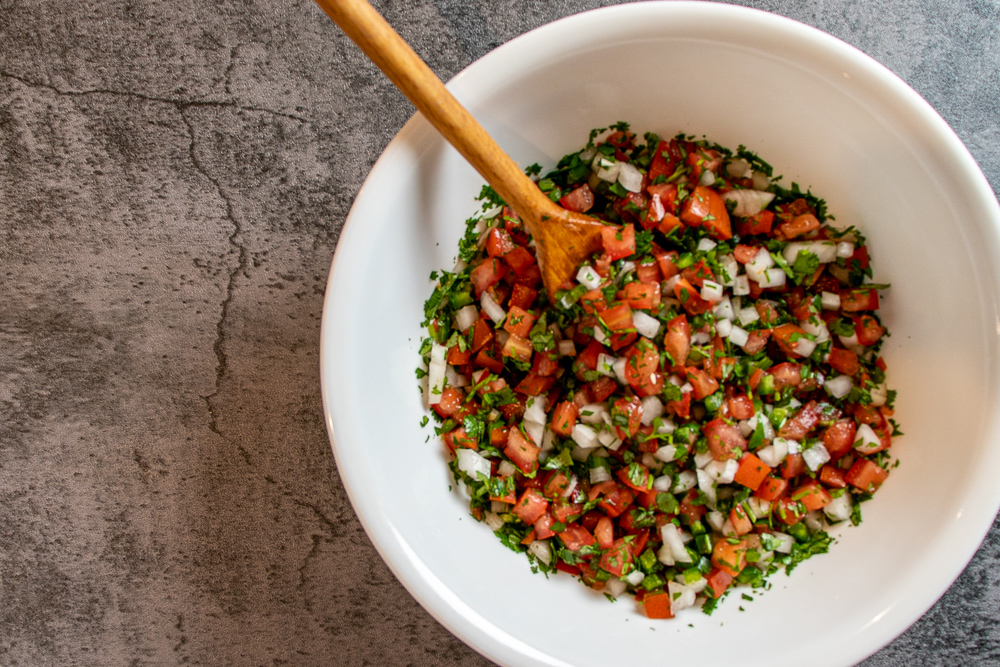
Freshly made Pico de Gallo is great as an appetizer with tortilla chips or served as a topping or filling in several recipes such as:
Tacos
Breakfast Burritos
Scrambled Eggs
Huevos Rancheros
Quesadillas – such as my Restaurant Style Chicken Quesadillas
Store your Pico in an airtight container in the refrigerator. It tastes best in the first 2-3 days, but I wouldn’t recommend stretching it past 4-5 days in the fridge. I wouldn’t recommend freezing it either as freshly cut veggies will lose their flavor and thawing it will add too much water from the ice crystals.
📋 Recipe
Classic Pico de Gallo
Ingredients
- 1¼ – 1½ pounds ripe red tomatoes, seeded and diced (about 3-4 tomatoes)
- 1 white onion, diced (about 1 cup)
- 1 serrano or jalapeno pepper, seeded and minced (add more for additional heat)
- ½ cup cilantro, minced (about 1 bunch, see notes)
- 2 tablespoons lime juice, (from 1 lime)
- Salt and Black Pepper, to taste (can omit pepper, but use at least ½ tsp salt)
Directions
- Dice the tomatoes and onions and place in bowl.
- Finely chop/mince the pepper and cilantro and add to bowl.
- Stir in the lime juice and season with salt and black pepper.
- Cover and refrigerate for 15 minutes or up to overnight. Can also be served immediately instead.
Equipment Used
Notes
Your Notes
Nutrition
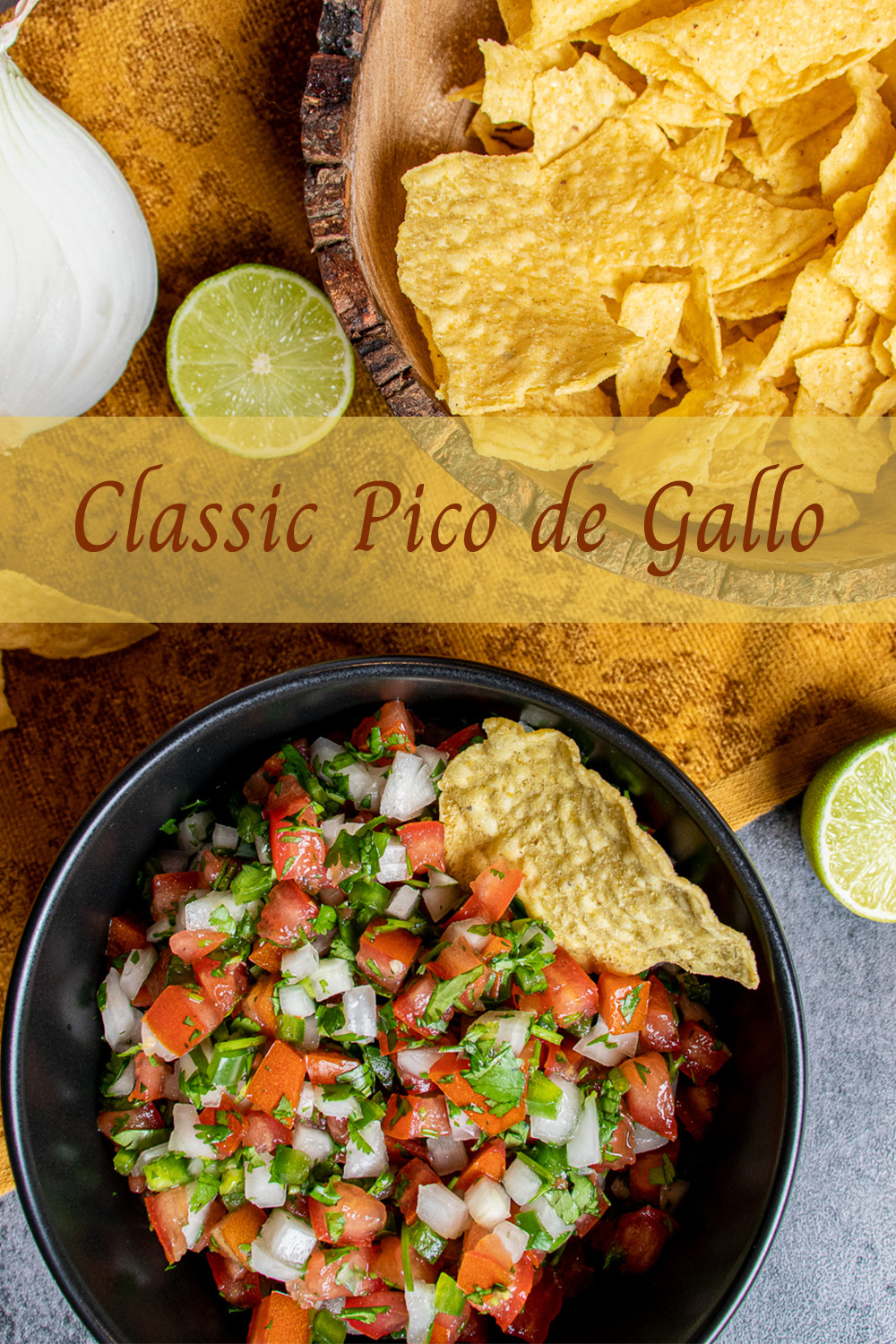

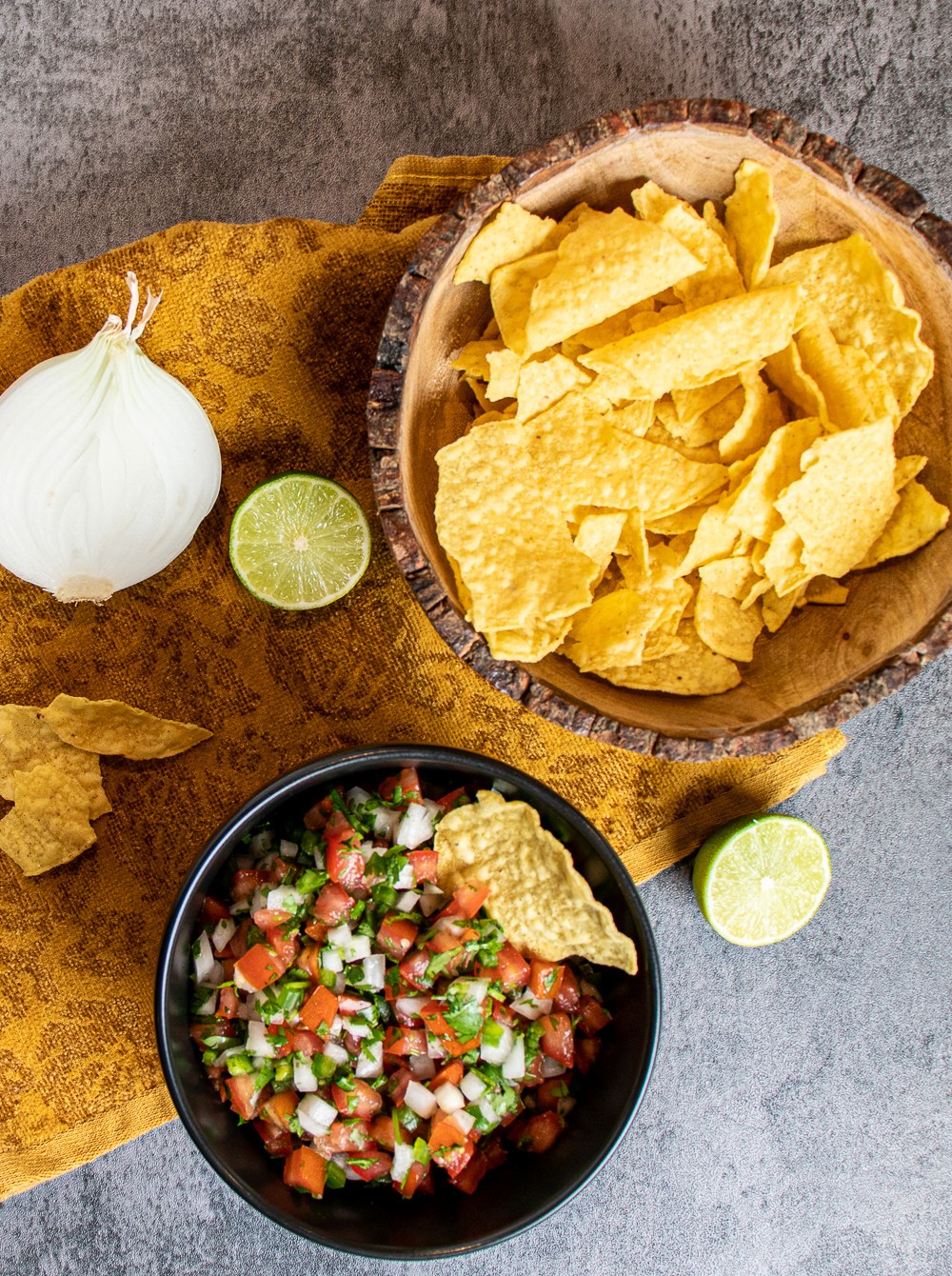
Comments
No Comments